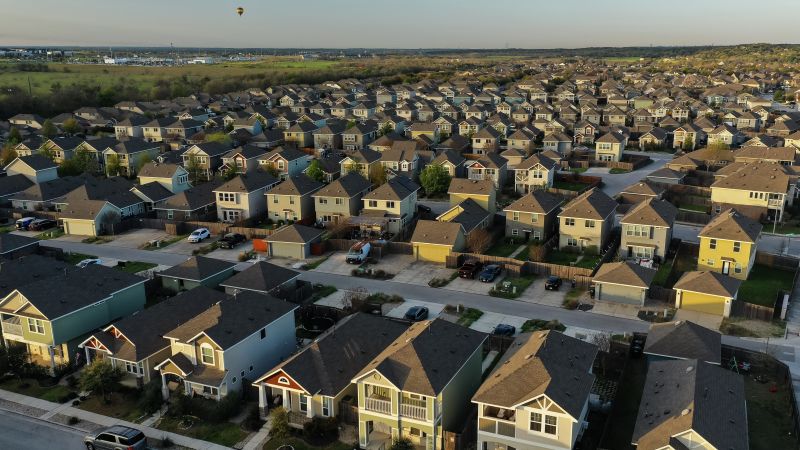Sales of previously owned homes in the United States fell in March as home prices continued to climb and mortgage rates remained steady, impacting the crucial spring homebuying season. Existing home sales dropped 4.3% to a seasonally adjusted annual rate of 4.19 million, the sharpest decline in over a year. The Northeast region was the only area to see an increase in sales. The median price of existing homes reached a record high of $393,500, up 4.8% from the previous year, highlighting the ongoing affordability issues in the housing market.
While home sales had shown improvement from historic lows last fall and had a strong start to the year, the momentum has now slowed. The Federal Reserve’s indication that interest rates are unlikely to be cut anytime soon may further hinder the rise in sales. NAR’s chief economist noted that despite an increase in jobs compared to pre-Covid levels, sales remain stagnant due to interest rates remaining unchanged. This lack of movement in rates could be a frustrating obstacle for potential homebuyers.
Mortgage rates play a significant role in determining housing affordability, which has been a point of concern. Last year, home sales were at their lowest in nearly three decades as mortgage rates soared to a two-decade high. Expectations of aggressive interest rate cuts in 2024 have since been dashed, with the Fed choosing to wait and observe the economy’s performance. While mortgage rates have been stable in recent weeks, they are expected to rise as bond yields, which they track, increase due to persistently high inflation. This, coupled with rising home prices, continues to impact affordability for buyers.
Despite the challenges, there has been a positive development in the increase of first-time homebuyers entering the market. The percentage of first-time buyers rose to 32% of all transactions in March, up from 26% in February and a 28% increase from the same time last year. This surge may be attributed to news of a lawsuit settlement impacting buyers and sellers in the real estate industry, prompting buyers to enter the market before new rules potentially come into effect in July. The settlement, which has yet to be approved by the courts, is already causing shifts in buyer behavior.
Overall, the real estate market in the United States faces persisting affordability challenges due to rising home prices, steady mortgage rates, and uncertainty surrounding potential interest rate cuts by the Federal Reserve. While there have been slight improvements in home sales and an increase in first-time buyers entering the market, the overall trajectory remains uncertain. With the impact of the NAR settlement looming over the industry, buyers are navigating new considerations that may further influence market dynamics in the coming months.


